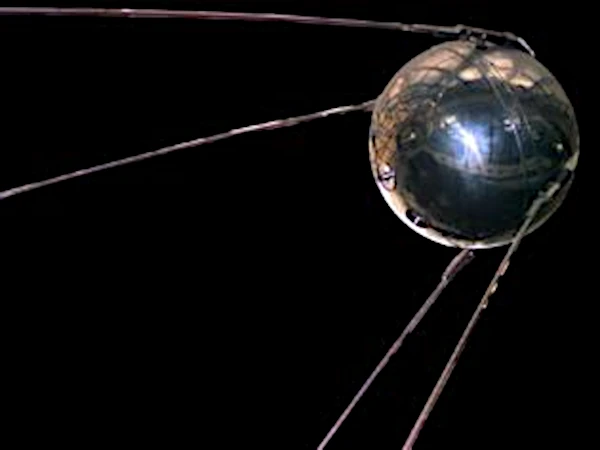
On October 4, 1957, the USSR stunned the world by placing Sputnik 1 into orbit, a metal sphere equipped with four radio antennas. This simple yet revolutionary satellite marked the beginning of the space age and triggered a technological and ideological competition with the United States, known as the space race.
A few weeks later, on November 3, 1957, Sputnik 2 was launched, carrying the dog Laika, the first living being placed in Earth orbit. This second launch demonstrated the Soviet capability to design heavier payloads (508 kg compared to 83 kg for Sputnik 1) and initiated biological exploration of space.
Sputnik 1 measured 58 cm in diameter and weighed 83.6 kg. Its 2.4 to 2.9 m antennas emitted radio signals on two frequencies (20.005 and 40.002 MHz), easily picked up by ground stations. Its initial orbital trajectory had a perigee of 215 km and an apogee of 939 km, with an orbital period of 96 minutes.
Sputnik 2 represented a considerable advance, integrating a rudimentary life support system, biomedical sensors, and a pressurized compartment. Its orbit had a perigee of 225 km and an apogee of 1671 km.
The radio signal from Sputnik 1 allowed scientists to study the density of the ionosphere by analyzing wave attenuation. Observing the orbital motion also provided practical confirmation of the laws of celestial mechanics, in accordance with Kepler's formula \(\, T = 2 \pi \sqrt{\frac{a^3}{GM}} \,\), where \(a\) is the semi-major axis, \(G\) is the gravitational constant, and \(M\) is the mass of the Earth.
Geopolitically, the Soviet success alarmed the United States, leading to the creation of NASA in 1958. This event symbolized a major strategic shift during the Cold War.
| Satellite | Mass | Diameter | Orbits (perigee > apogee) | Payload |
|---|---|---|---|---|
| Sputnik 1 | 83.6 kg | 58 cm | 215 km > 939 km | Radio transmitters |
| Sputnik 2 | 508 kg | ≈ 4 m (conical structure) | 225 km > 1671 km | Dog Laika + biomedical instruments |